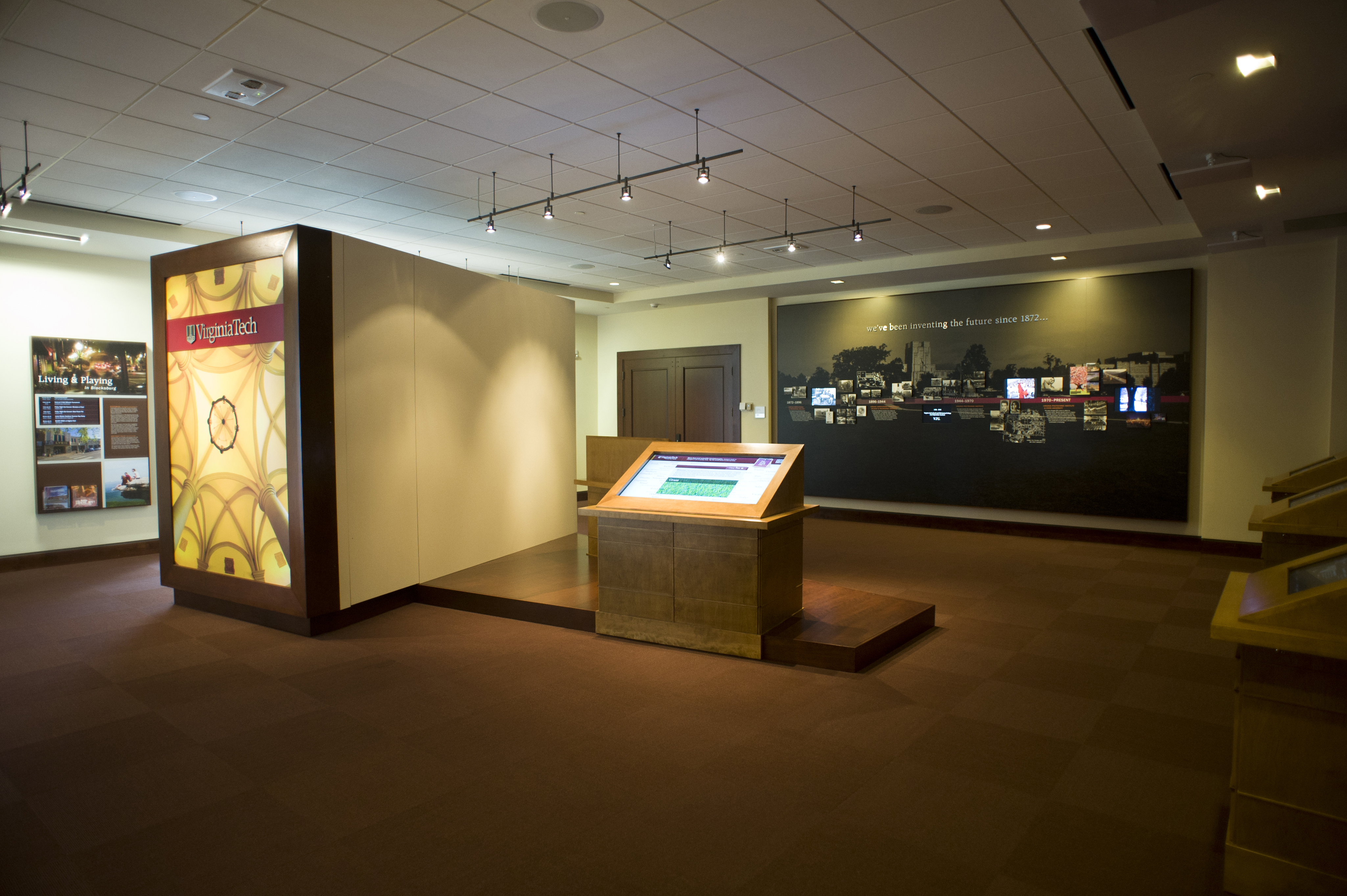Visitor and Undergraduate Admissions Center earns LEED certification for sustainability

Virginia Tech’s Visitor and Undergraduate Admissions Center is more than a gorgeous display of architecture. It is also Leadership in Energy and Environmental Design (LEED) certified and serves as another example of the university’s commitment to sustainability.
The LEED green building rating system is the recognized standard for measuring building sustainability. Developed and administered by the U.S. Green Building Council, LEED certification promotes design and construction practices that increase profitability while reducing the negative environmental impacts of buildings and improving occupant health and well-being.
In addition, the project earned three Innovation in Design credits for green cleaning, green education, and exemplary performance for open space. The latter was earned by meeting the criterion that the project provide open space greater than or equal to the building footprint. Thanks to the university’s designated preservation area around the Duck Pond, 44,000 square feet of open area (more than four times the building’s footprint of 9,093 square feet) is land set aside for the life of the building. The site is one of approximately 15 such preserved areas around the Duck Pond.
“This is one example of Virginia Tech’s commitment to the sustainability movement,” said Jennifer Wimmer, associate with Glavé & Holmes Architecture of Richmond, architects for the project. “The university was seeking LEED certification even before the state mandated compliance for new construction.”
The center is Virginia Tech’s fourth LEED-certified project, the other three being the Theatre 101/Henderson Hall renovation, the football locker room addition, and ICTAS II. Certification is expected soon for the Ambler-Johnston renovation (east and west) and Lavery Hall.
“Virginia Tech is a committed to being a leader in campus sustainability,” said Dennis Cochrane, sustainability program manager for the university. “What better way to do that than to showcase it at a major gateway to the university? The center gives our visitors their first impression and their most lasting impression of our beautiful campus.”
Other examples of the project’s sustainable design include
- Four storm water bio retention filters , landscape features that help contain storm water, filter it, and slowly disperse it back into the ground;
- High efficiency air filtration units for indoor air quality;
- Lighting efficiency with LED fixtures, dual-level lighting so that light levels are reduced when adequate natural light is available; and occupancy sensors throughout the building; and
- Displacement ventilation system in the building’s multi-use assembly area that controls the temperature of the lower (occupied) portion of the space, while the temperature of the upper portion is allowed to drift above the set point.
In addition, 70 percent of waste from construction of the building was diverted from landfills and put to other uses, and 30 percent of materials used in building the structure were manufactured regionally.
The two-story, 18,155-square-foot building, which opened in July 2011, serves as the “front door” to visitors to the university, and houses the Office of Undergraduate Admissions. It features an easily identified entrance and reception area, a two-story glass wall that provides a sweeping view of campus, and a blend of traditional Hokie Stone and gothic character with modern design.
During its first full year of operation in its new facility, the center welcomed nearly 59,000 visitors.
Dedicated to its motto, Ut Prosim (That I May Serve), Virginia Tech takes a hands-on, engaging approach to education, preparing scholars to be leaders in their fields and communities. As the commonwealth’s most comprehensive university and its leading research institution, Virginia Tech offers 240 undergraduate and graduate degree programs to more than 31,000 students and manages a research portfolio of $513 million. The university fulfills its land-grant mission of transforming knowledge to practice through technological leadership and by fueling economic growth and job creation locally, regionally, and across Virginia.




